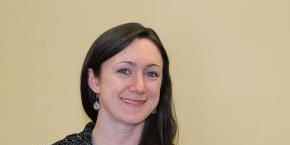By Nikki Sauber, Impact and Investments Manager

For the first time ever, Monadnock United Way is asking nonprofit programs seeking MUW funding to include a logic model as part of their 2020 application. To me, this is exciting. To others, this may be challenging, irritating and/or terrifying.
What is a logic model? Also called a theory of change or program matrix, a logic model can be defined as a “graphic representation of a program showing the intended relationships between investments and results.” Basically, it’s a tool that helps nonprofit leaders review everything that goes into a program (inputs), assess what the program is trying to accomplish (outputs and outcomes), and understand how program activities connect the dots between these two things.
Sure, there are lots of frameworks to dissect program design and implementation, but I value logic models because of their versatility and usefulness:
- Trying to show a funder what your program does, at-a-glace? Use a logic model.
- Need to develop performance measures to track progress toward program goals? Use a logic model.
- Want to explore how program activities could be streamlined to improve organizational efficiency? You guessed it: use a logic model.
This is exactly why MUW has begun requesting logic models from its partners. We know that logic models will be powerful learning tools for the teams of community volunteers who are tasked with evaluating applications and making recommendations for MUW’s investments. Moreover, partners will be able to use their logic models for other purposes in the future.
My analytical brain loves logic modeling (a verb that I’ve made up), and what I love even more is coaching others. I try to make logic modeling fun: I bust out sticky notes, colored markers, string, scissors and tape and take over a blank wall while the process unfolds. Program leaders have all the answers they need right inside of their heads and/or offices; I simply offer a framework and some guidance. I am consistently tickled to watch seasoned nonprofit professionals get excited over “a-ha!” moments during their logic modeling work.
Have I inspired you to become a logic modeler, or a logic model appreciator? Check out these slides from a logic model training I ran earlier this year, and feel free to contact me if you’d like more information or support.
